A couple of weeks ago I began to have a fresh look for what I could find out about my JOHNSTON ancestors, from Bathgate in West Lothian, in the WALKER branch of my family tree. Now I want to write up about the new things I’ve found.
I will write more about my recent research into Patrick MAIR and Thomas JOHNSTON in “Part 2”. But in this post (Part 1), due to its length, I just want to focus on this amazing newspaper article, from the “Falkirk Herald”, from Saturday, 15th August 1925; page 11 – which I found a few days ago, via the British Newspaper Archive. The article is full of  biographical information about these direct ancestors of mine from my WALKER family branch. Before I found this article, I knew some very limited pieces, but very few of the details that this article contains.
biographical information about these direct ancestors of mine from my WALKER family branch. Before I found this article, I knew some very limited pieces, but very few of the details that this article contains.
Please see the JOHNSTON family tree that I’ve previously posted, or the JOHNSTON category for all my articles relating to the JOHNSTON family.
Being mindful of copyright issues, I’m not posting the full British Newspaper Archive’s image of the newspaper article (you’ll need to visit their website for that!). I am posting my own transcription of the text from that image, word for word (including the original typos!).  All I’ve changed is to brake the text up into more paragraphs, highlight some of the publication titles mentioned, in bold, and put the lists of titles into bullet-point lists – all in the hope of making it easier to read. I have also added hyperlinks to additional information about some of the names, places, & terms mentioned, and I have made some notes/comments of my own at the end, about various names, places, terms, etc, with hyperlinks to further information.
All I’ve changed is to brake the text up into more paragraphs, highlight some of the publication titles mentioned, in bold, and put the lists of titles into bullet-point lists – all in the hope of making it easier to read. I have also added hyperlinks to additional information about some of the names, places, & terms mentioned, and I have made some notes/comments of my own at the end, about various names, places, terms, etc, with hyperlinks to further information.
Just a note of caution; this newspaper article is a “secondary source” of information. I would very much like to hunt out and check “primary sources” (like parish records) to verify many of the details given in this article.
AN OLD PRINTING BUSINESS.
ITS FORMER PROPRIETORS.
The printing business, of which the publishers of the “Falkirk Herald”* are the proprietors, and of the founder of which they may claim to be the lineal descendants, has a history extending over a period of no less than one hundred and fifty-eight years. Its founder was Patrick Mair, who belonged to a West Lothian family. Mr Mair’s forbears were among the smaller lairds of that county, and for generations they had farmed their own patrimonial lands of Pottishaw, in the southern district of the shire. To that property Mr Mair himself eventually succeeded. Afterwards the lands passed into the possession of the Johnston family, and some years ago were sold to Messrs William Baird & Co., Ltd., coalmasters.
The son of Patrick Mair and Margaret Telfure* his wife, the future printer of Falkirk was born in Ridge of Blairmucks, in the parish of Shotts, and baptised in Whitburn Kirk on 13th March 1738. In 1743, on the birth of his brother, Thomas Mair, the family were resident in Bathgate. In passing, we may note that Thomas Mair of Pottishaw, who was a well-known Bathgate merchant for many years, and who died in 1808, was one of the original partners of the old Falkirk Banking Company from its foundation in 1787 to 1802, and conducted business for the bank in Bathgate. He was also one of the originators of the ill-fated Union Bank of Falkirk, founded in 1803, but which had to close its doors in 1816. Patrick Mair’s parents then being settled in Bathgate, it may be surmised that after a few years’ schooling he was apprenticed to the printing trade. Married on August 11th, 1763, to Jean Aitken, of Falkirk parish, in the following year he had set up a printing press of his own in “the second close above Bell’s Wynd,” Glasgow, a volume, entitled “Sermons by the late Mr Thomas Boston” being then issued from his press. Mr Mair’s name is not found on the toll of “Burgesses and Guild Brothers of the City of Glasgow.” But these rolls, it has been authoritatively stated, are notoriously defective, and it may be deemed a certainty that Mr Mair had the necessary permission to begin business in the city, although that fact is not recorded. His stay in Glasgow, however, was not a lengthy one. He was there in the opening month of 1765, but from an advertisement inserted in the “Edinburgh Evening Courant”* for Monday, 6th April, 1767, regarding an edition of Matthew Henry’s Exposition of the Old and New Testaments, subscribers for the work were asked to send their names to — among others — “Mr Patrick Mair, Book- seller, Falkirk.”
Works from Falkirk Press.
It seems reasonable to suppose that on settling in Falkirk, Patrick Mair brought his printing press with him, and although no work printed by him seems known to bear date earlier than 1783, it is quite likely he may have issued other works before that time. The title of this 1783 volume runs thus:—
“The History of the Holy Bible, containing the Old and New Testaments, By Question and Answer. Giving (I) An Account of the remarkable Events and Transactions of the Antedeluvian and Patriarchal Ages before and after the Flood; As also, several very curious Critical Remarks and Practical Observations upon the Lives of the Patriarchs. (II) A minute Description of the Jews, from the Calling of Abraham to their settlement in the Promised Land; with suitable remarks upon the Messages of the Prophets sent to that People. (III) And lastly, The History of our Lord and Saviour Jesus Christ, and his Apostles, from the Birth of John the Baptist, to the Conclusion of the Canon of Scripture, For the benefit of every Real Christian. By Mr Christopher Love, a Martyr, late Minister of the Gospel in London. (John v. 39 quoted). Falkirk: Printed and Sold by Patrick Mair, Also Sold by James Buchanan, Bookseller, 1783.”
Large numbers of works, great and small, were issued from his industrious press, and some of these books of which he was printer and publisher are now much valued by collectors on account of their scarcity. In the production of religious literature, especially that of the early Scottish seceders and the English Puritan divines, he attained a certain reputation and eminence of his own.
To name every work that came from Patrick Mair’s press, even if we had their titles, would occupy considerable space. The following are a few of the works he issued, in addition to the one just named:—
- “The Old Man’s Most Serious Advice to his Young Friend and other Pamphlets, by a Lover of Truth” (1783);
- “Human Nature in its Four-fold Estate; A New Edition, Carefully Revised and earnestly Recommended To the Perusal of every Christian Family. By the Reverend Mr Michael Boston. Minister of the Gospel in Falkirk, and Author’s Grandson.” 1784. (The Rev. Michael Boston was the first minister of Falkirk Relief, now the West U.F. Church*. He was inducted to his charge in November, 1770, and died while in office on 5th February, 1785);
- “A Treatise Concerning the Lord’s Supper, by Thomas Doolittle” (1786);
- “The Whole Works of the Rev. and Pious Mr Andrew Gray, late Minister of the Gospel in Glasgow.” 576 pages (1789);
- “The Whole Works of the Rev. Ebenezer Erskine,” 1024 pages, quarto (1791);
- “The Westminster Assembly’s Shorter Catechism Explained by some Ministers of the Gospel,” 290 pages (1795);
- “The Sermons and other Practical Works of the late Rev. and Learned Ralph Erskine, A.M.,” 10 vols, (1796);
- “Poetical Works of Ralph Erskine,” 712 pages (1797).
The Complete Letter-Writer.
We should not omit to mention one more interesting book which came from Mr Mair’s venerable press. It is “The Complete Letter-Writer, containing Familiar Letters on the most Common Occasions of Life; also a Variety of Elegant Letters for the Direction and Embellishment of Style, on Business, Duty, Amusement, Love, Courtship, Marriage, Friendship, and Other Subjects; to which is prefaced A Plain and Compendious Grammar of the English Language, with Directions for Writing Letters, and the proper Forms of Message Cards, and a copious English Spelling Dictionary.” This was issued in 1792: the typography is remarkably clear; and the contents of the work, or rather conglomeration of works, are full of quaintness, and redolent of the old school of life and manners.
In the year 1797 Patrick Mair retired from the business, and died at Falkirk, February 20th, 1805, when just about to complete his 67th year. Mrs Mair survived until 1819, when she passed away at the venerable age of 93. Of the members of their family, Margaret married Mr Thomas Johnston, to whom we shall refer more fully presently, and Isabella married Mr John Rankine, bookseller, Falkirk. A daughter of this latter union, Jessie Rankine, married the Rev. Alexander Cuming Rutherford, of Falkirk. Of their family, great-grandchildren of Patrick Mair, and natives of Falkirk, James, born 1840, became celebrated as a mental specialist, and for many years was head of the Crichton Royal Institution*, Dumfries. He died in 1910. John Rutherford, born in 1842, entered the ministry of the U.P. Church, and was ordained pastor of St Nicholas Church, Aberdeen, 11th November, 1868. In 1882 he sought and obtained admission to the Church of Scotland, and for a number of years was minister of St Magnus Cathedral, Kirkwall. He died at Harrogate, 22nd January, 1922. Alexander Cuming Rutherford, born 5th November, 1844, was a chartered accountant in Glasgow, and for some years Provost of Kirkintilloch. His death took place in 1909. The present minister of Dunkeld Cathedral, the Rev. Thomas Rankine Rutherford, M.A., is also a great-grandson of Patrick Mair.
“Killing Time” Recalled.
Mr Mair was succeeded in the printing business by his son-in-law, Mr Thomas Johnston. The latter was also of Linlithgowshire stock, his people having for generations farmed lands at Ballencrief, near Bathgate, where he was born on 22nd July, 1755. In that district, during the “killing time,”* when so much Scottish blood was shed by the persecuting myrmidons of the unworthy King Charles II, there was strong popular sympathy with the covenanters. One at least of Thomas Johnston’s progenitors suffered death for the cause of Presbytery. This was James Davie*, an ancestor through the maternal line, who was slain, while attending a conventicle at Blackdub, in 1673, by a party of dragoons under an officer named Heron. Davie was buried in the secluded old churchyard of Bathgate, where there is a stone to his memory.
There are pretty good grounds for believing that Thomas Johnston was not bred to the printing of bookselling trade, but first followed another calling, ultimately assisting Patrick Mair in business, and finally succeeding to it as we have stated, in1797. That, at least, is the earliest date known, when any of the numerous books which bear his name was printed. He had evidently been settled in Falkirk by 1785, as on the 5th December of that year he was united in marriage to one of Patrick Mair’s daughters, Margaret. If, as we may assume, he assisted his father-in-law during the years 1785 to 1797, he must have been thoroughly equipped to carry on the business when it was transferred to him.
During a long series of years Mr Thomas Johnston carried on printing and publishing in Falkirk, issuing editions of many important books, a few of which are:—
- “Parable of the Ten Virgins,” opened and applied, by Thomas Shepherd. 2 vols., 500 pages each (1797):
- Memories of the Life of the Rev. Geo. Whitefield, M.A., with portrait. 300 pages (1798):
- “The Death of Death in the Death of Christ,” by John Owen, D.D. (1799).
Quaint Chap-Books.
Like his father-in-law and predecessor, Mr Thomas Johnston was strong in the works of famous divines, for which there was in the Scotland of that period a remarkable demand; but he also did a good deal in the reproduction of lighter literature. Chap-books* were then greatly in vogue, and of these he printed large quantities. They were cheaply got up affairs and were vastly popular with the masses. Through the agency of these packmen or pedlars who, before the epoch of railroads, were about the only traders to supply the wants of remote localities, they found their way to every rural district, where they were eagerly purchased by the peasantry. The chap-books were almost infinite in their variety, among them being sermons, stories, ballards, lives of heroes, historical abridgments, travels, etc.
It is worthy of mention that one of the chap-books entitled “The Life and Exploits of Rob Roy Macgregor.” issued by Thomas Johnston in 1814, must, according to Mr Clement K. Shorter, the well-known literary critic, have been seen by Sir Walter Scott, whose romance of “Rob Roy” “is made,” he says, “to run on parallel lines.” A reprint of this chap-book was given in the columns of the “Falkirk Herald” beginning 3rd August, 1910, and was taken from a copy of the book in the British Museum*. The titles of a few of those issued from this office may be given as curiosities —
- “The Mournful Tragedy of the Valiant Knight, Sir William Wallace, Governor of Scotland, to which is prefixed a Brief Historical Account of his most surprising exploits for the Delivery of Scotland, and the way in which he was betrayed into the hands of the English”;
- “The Surprising Life and Sufferings of Peter Williamson, who was carried off from Aberdeen in his infancy and sold as a slave in North America”;
- “History of the King and the Cobbler”;
- “The History and Adventures of that famous Negro robber, Three-fingered Jack, the Terror of Jamaica”;
- “The Surprising Adventures of Frederick, Baron Trenck, giving an account of how he was confined in a dungeon with chains of 68 pounds weight, and was afterwards guillotined in France, in the time of the Revolution”;
- “The Advantages and Disadvantages of Married State by Philanthropist”.
The British Museum Library* contains a considerable number of others, not mentioned in the above list, many of them with quaint titles.
At the Burns Exhibition* held at Glasgow in 1896, the following works from Thomas Johnston’s press were shown, and are now rarely to be met with:—
- “The Beauties of Burns” (12mo). 1809;
- “Beauties of Burns’ Poems” (12mo). 1819;
- “The most admired Poems of the celebrated Scots Poet, Robert Burns” (12mo). 1826.
The first-named was lent by the late Mr George Gray, whose collection of rare Scottish books and chap-books was unique, and the last-named, by the late Mr W. Craibe Angus, Glasgow, renowned as an art critic and authority on everything pertaining to the works of the National Bard.
Stintmaster and “Chief Magistrate.”
In the affairs of his adopted town, Mr Thomas Johnston took a lively and public-spirited interest. On 10th October, 1809, he was elected a Stintmaster*, being one of four who represented the merchants, and three days later he was elected Preses* of that body. On the 13th May, 1811, he was re-elected. Further confidence was shown in him by the Feuars* of Falkirk, who elected him Preses of a committee composed of several of their number and of the inhabitants. The subject that agitated the community at the time was the construction of the present handsome town’s steeple* — our most conspicuous landmark. As “Chief Magistrate,” he  presided at the laying of the foundation stone of the structure on 24th March, 1813, and it was principally owing to his unremitting assiduity and public spirit that the undertaking was brought to a successful conclusion. The handsome town clock, which keeps the “Bairns” “up to time,” was contracted for during Mr Thomas Johnston’s term of office, as a brass tablet in the Steeple indicates, and also the magnificent toned bell, cast by Mears, of London. On the completion of these undertakings, Mr Johnston retired from taking an active share in Stintmasters’ and Feuars’ affairs. He was, it may further be mentioned, one of the originators of the Falkirk Curling Club, founded in 1816, which is still going strong “when stern winter rules,” and in 1811 he joined the old Masonic Lodge of Falkirk, now known as Lodge 16. He died on 18th May, 1831, much and justly esteemed and respected by the community. Mrs Johnston died 25th October, 1838.
presided at the laying of the foundation stone of the structure on 24th March, 1813, and it was principally owing to his unremitting assiduity and public spirit that the undertaking was brought to a successful conclusion. The handsome town clock, which keeps the “Bairns” “up to time,” was contracted for during Mr Thomas Johnston’s term of office, as a brass tablet in the Steeple indicates, and also the magnificent toned bell, cast by Mears, of London. On the completion of these undertakings, Mr Johnston retired from taking an active share in Stintmasters’ and Feuars’ affairs. He was, it may further be mentioned, one of the originators of the Falkirk Curling Club, founded in 1816, which is still going strong “when stern winter rules,” and in 1811 he joined the old Masonic Lodge of Falkirk, now known as Lodge 16. He died on 18th May, 1831, much and justly esteemed and respected by the community. Mrs Johnston died 25th October, 1838.
The newspaper article continues, with pieces about of two of Thomas JOHNSTON’s sons; the “third son”, James, (or the 4th son according to the Genealogical Chart!) who was an Engineer to the Russian Czar (Nicholas I) in St. Petersburg, and the “youngest son”, Archibald who succeeded Thomas in the printing business.
*Notes;
Falkirk Herald; See – Wikipedia for a bit about the newspaper’s history, or the Newspaper’s own website HERE. For some history of the Johnston Press, see their website, or Wikipedia.
Margaret Telfure; At first site of this, I wondered if the newspaper (or their source) had mis-transcribed the “F” in Telfure from an old-fashioned long-S, making it “Telsure”! (I have since been assured that this is not the case). By searching the IGI, I have also found records of a couple in the same parish, at the same time period, transcribed as “Peter MAIR” and “Margaret TELFER”, including the christening of a son; Thomas, in April 1743. So is this the same couple? It needs a careful look at the parish registers to try and work out!
Edinburgh Evening Courant, newspaper; See – Wikipedia.
Falkirk Relief or Falkirk West United Free Church; See Falkirk Archives; Finding Aid (60) pdf file.
The Crichton Royal Institution, Dumfries. See – Wikipedia
The “killing time”. See – Wikipedia.
James Davie, Covenanter; See CANMORE Record of James Davie’s tomb at Bathgate, and Dr Mark Jardine’s blog about the Covenanters for more details about James Davie’s life and death. Thomas JOHNSTON’s paternal grandmother was a “Marion DAVIE, from Blackdub, or Tannock, near Cumbernault” (according to the JOHNSTON family tree that I have). I have no other details for Marion DAVIE. If they are related, then James might belong to the generation of Marion’s Grandparents.
Chap-books. See “Chapbook” on Wikipedia.
The British Museum Library; www.britishmuseum.org . I have tried searching their catalogue HERE, for some of the titles given, and for the JOHNSTON name as publisher, but without results!
The Burns Exhibition, held in Glasgow in 1896; there are several examples of the exhibition catalogue digitised on-line, including;
Stintmaster, or Stentmaster; see Falkirk Local History Society.co.uk or the book “Falkirk Through Time”, via Google Books.
“Preses”; meaning “President” (I think!).
Feuars of Falkirk; see the Dictionary of the Scots Language for its meaning, or Falkirk Local History Society.co.uk for the local history.
Falkirk town Steeple; see Wikipedia or Falkirk Local History Society.co.uk.
Please see “Part 2” for some of my thoughts about the above article, and other information I’ve recently found.



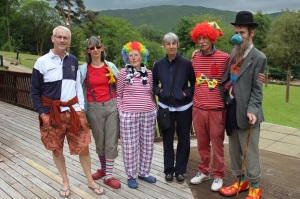
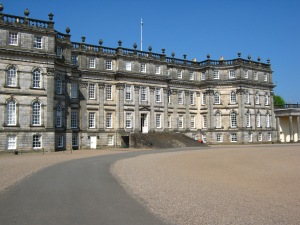
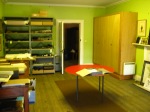

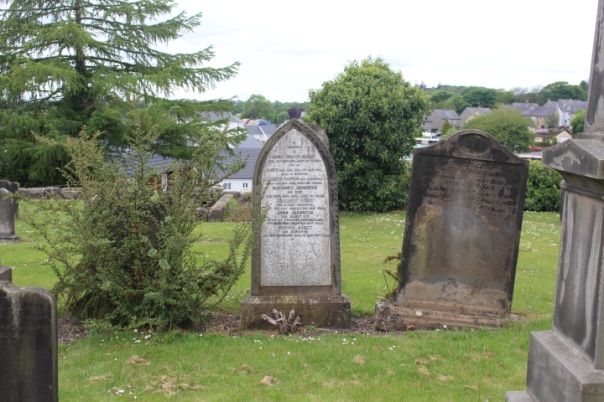























 In
In 

 The second source was some old newspaper articles from the
The second source was some old newspaper articles from the 










 John’s death is also recorded on a gravestone in
John’s death is also recorded on a gravestone in  Transcription of Page 1 (right side);
Transcription of Page 1 (right side);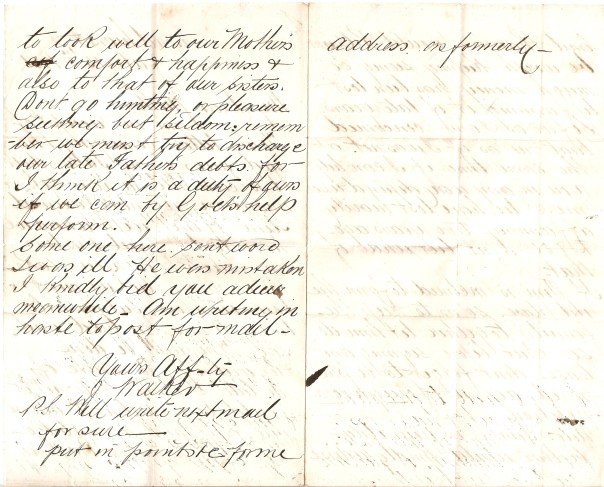 Transcription of Page 2 (left side);
Transcription of Page 2 (left side);


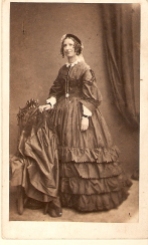




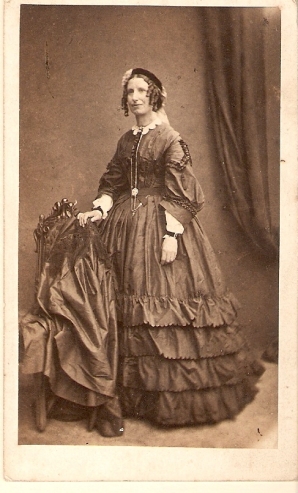




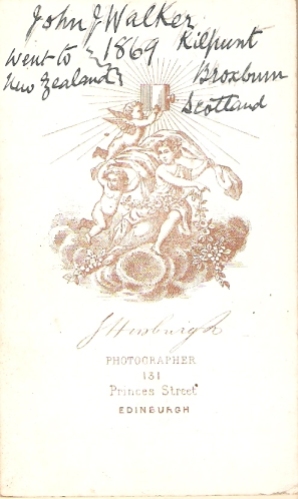




 Due to this contact, I looked out a document from the chest of WALKER family papers that tells a bit of the history of Kilpunt, which I have now transcribed (below).
Due to this contact, I looked out a document from the chest of WALKER family papers that tells a bit of the history of Kilpunt, which I have now transcribed (below).

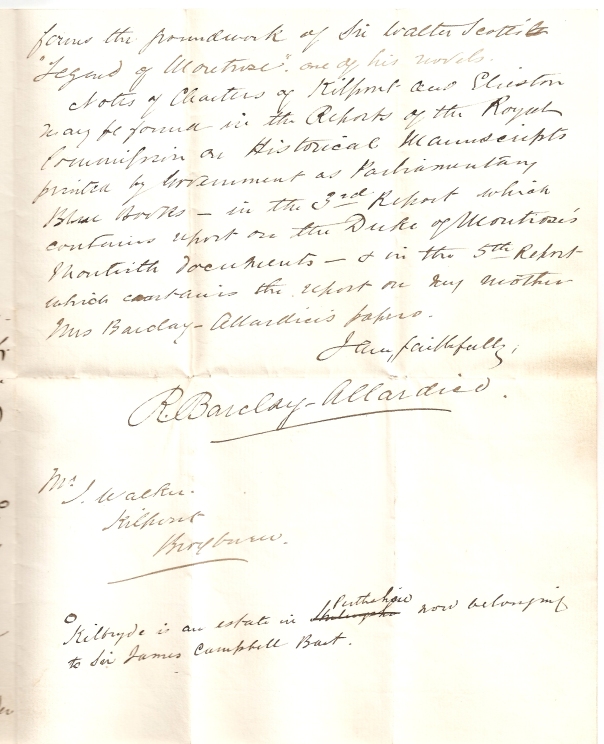
 The Kilpunt farm house was referbished in the 2000’s and sold on, and new houses have been built in its walled garden (to the south). The barns, or “Steadings”, have also been converted into houses, and I believe that developers have outline plans to build housing on the surrounding farmland.
The Kilpunt farm house was referbished in the 2000’s and sold on, and new houses have been built in its walled garden (to the south). The barns, or “Steadings”, have also been converted into houses, and I believe that developers have outline plans to build housing on the surrounding farmland.